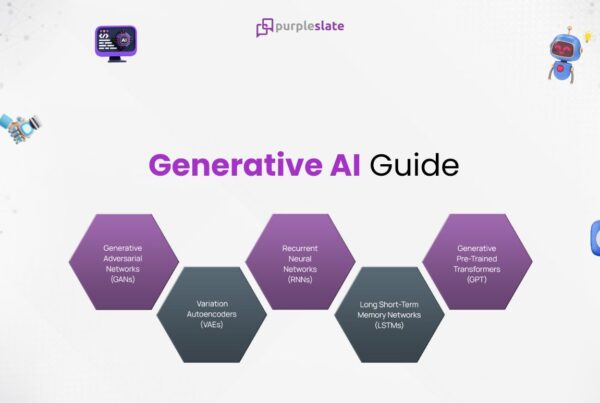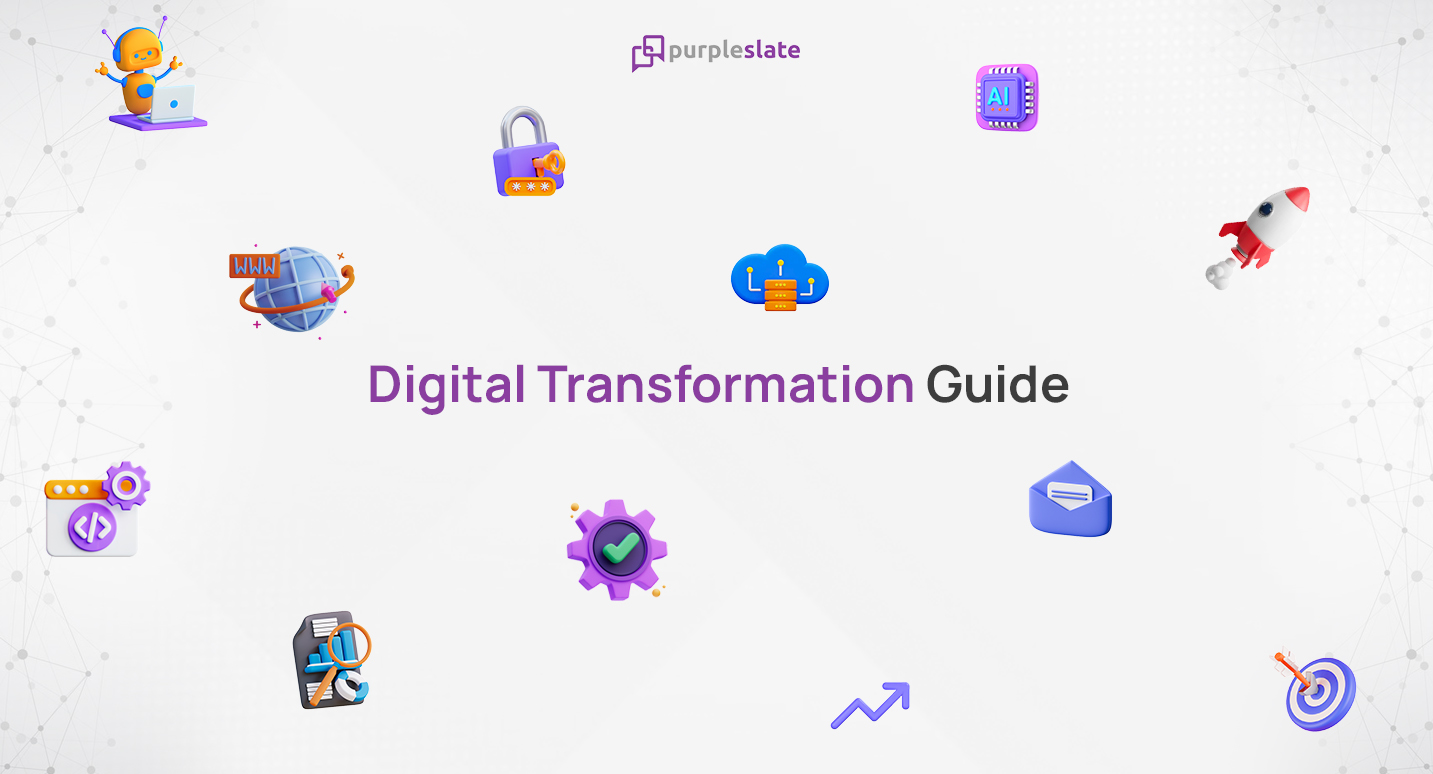
Prologue – The Current State of Digital Transformation Projects
When 70 percent of transformations fail, a company needs a proven strategy to beat the odds – McKinsey
The world has changed the way it approaches business. Digitalization is taking the driver’s seat, with most of the transactional tasks getting automated at pace. Digital transformation has become a buzzword, with many projects being launched across different functions, business units, industries, and more.
But the shocking fact is that many digital transformation solutions fail. When Forbes pegged that 84% of digital transformation projects fail, McKinsey settled for 70%, and both are shockingly high. To quote a real-life instance, one organization planned for revamping its existing website. The vendor quoted 6 weeks for the project, while the actual implementation extended beyond 8 months. If a tried and tested digital transformation project like a website can extend well beyond the accepted timelines, think about complex transformation projects involving multiple stakeholders across different business units, and different functions.
When we dive deeper into this pandemonium, we understand that the reasons for these failures are similar. In a twisted sense of poetic justice, they align with the same three pillars of digital transformation.
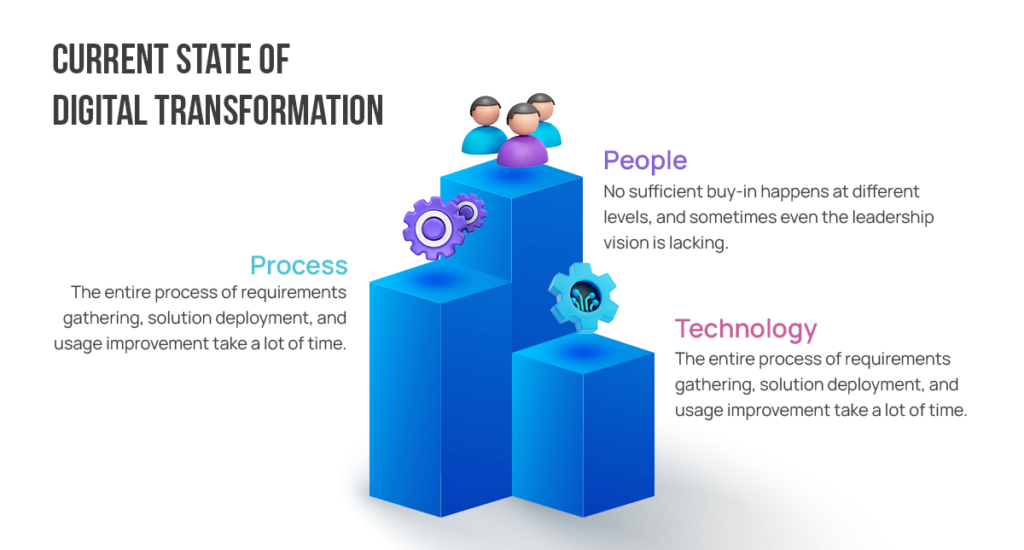
In this guide, we will try to address the issues surrounding the process bottlenecks, how to select the right digital transformation partner, and how to have a successful digital transformation.
The Need for Speed in Digital Transformation
As organizations think about the tools they need to drive digital adoption and tech implementations, many haven’t taken a step back to first consider what the organization needs – CIO
A key methodology in addressing time delays is employing the speed-to-value methodology. Speed to Value is achieving maximum value by executing projects at speed in the shortest possible timeframe. The reasons are many, but we address the top 3 reasons for adopting Speed to Value.
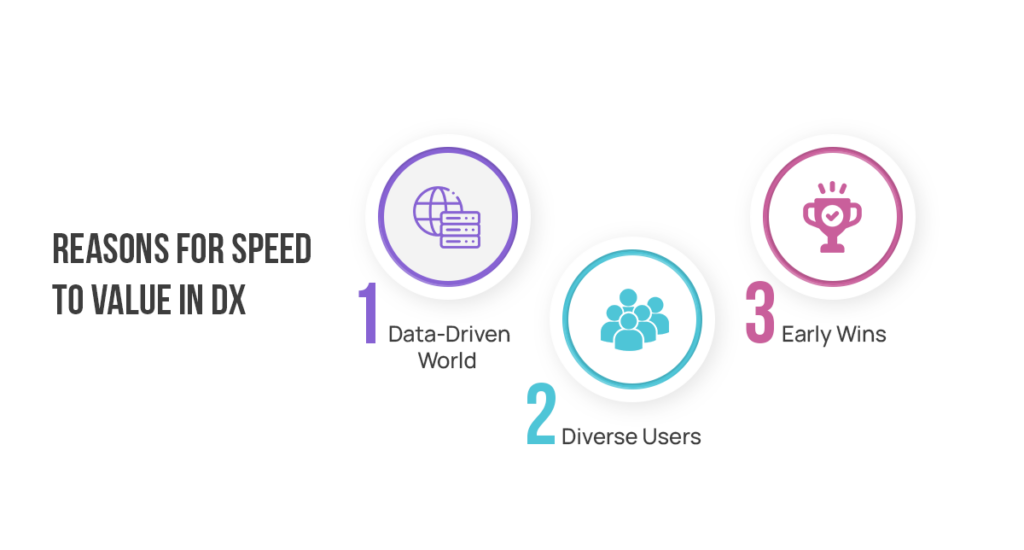
- Data-Driven World: The spectrum of decision-making has gone through a 180-degree turn to depending on data for decision-making rather than relying on gut feelings. Thus, the faster the data is accessed, the better their decision-making. Digital transformation ensures better data collection at each point and a faster implementation will pave the way for enhanced data collection, decision-making, etc.
- Diverse Users: Digitally transforming a process or a part of a function, will impact the diverse set of users who will be working on the team. Their needs are different, and if the product or tool is down for extended periods of time, it will affect the effective functioning of the team.
- Early Wins: The greatest advantage speed to value possess over other digital transformation practices is assured early wins. Leaders can expect to see a positive impact in terms of breaking data silos, improved process efficiency, and effective interdepartmental collaboration.
The 4 – Point Strategy to Execute Speed to Value
Companies often miss all sorts of procedural elements that make a transformation thrive – McKinsey
Speed to value is a game changer for digital transformation projects. The project execution must ensure users derive the maximum value from their digital transformation effort. This can be achieved through a simple 4-point strategy.
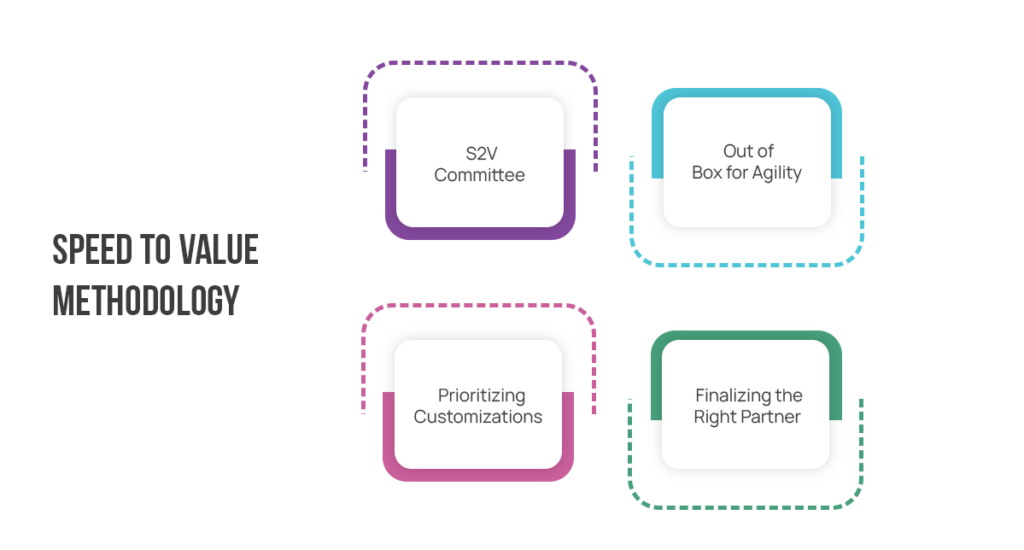
S2V Committee
The S2V Committee or Speed to Value Committee is formed by members from both the product and the end-user side. This committee is set up to form the end objectives and governance policies and decide on which customizations need to go live. The S2V committee usually consists of members above the Associate VP level from the solution implementation team and of a similar cadre from the client. The team will also consist of a couple of end product users whose inputs will guide the committee further. The primary objectives of the S2V committee are two.
- Project Health: They will be tasked with monitoring the project’s health and understanding whether phase-wise implementation is happening within the timeline.
- Finalizing Customizations: Deciding on the final set of customizations and features that need to go live and putting the right interventions in place to ensure the project gets delivered within the accepted timelines.
Out-of-Box for Agility
The most common mistake people make with digital transformation projects are focusing on customizations instead of prioritizing out-of-box implementations. There are many benefits of implementing out-of-box in the preliminary stages instead of customizations. Out of box features are already tried and tested out in many different scenarios, and they definitely give an immediate advantage.
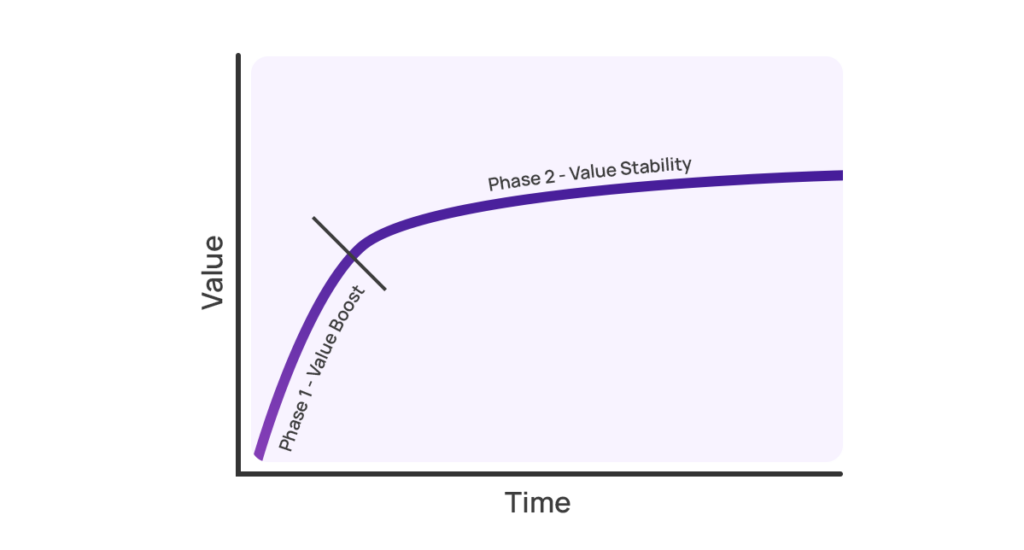
The probability of an out-of-box functionality breaking while in production is minimal. Since it’s universal (many others also use the same functionalities), the support system will be robust. It also significantly cuts down the go-live time with customizations moving on to phase-2 of the project. The phase-1 is where out of box goes live and is focused on boosting maximum value.
Prioritizing Customizations
One factor to note is that there is no one size fits all approach to any digital transformation project. Every potential user expects some form of customization to match their business requirements. However, they all fail to prioritize customizations.
The project’s second phase in speed to value is when customizations happen. This is also the phase where value stability, i.e. ensuring the value grows and scales, is given importance. Estimating which customization needs to go live, which can be parked, and which can be avoided altogether is essential. This is where the Complexity Significance Matrix comes into play.
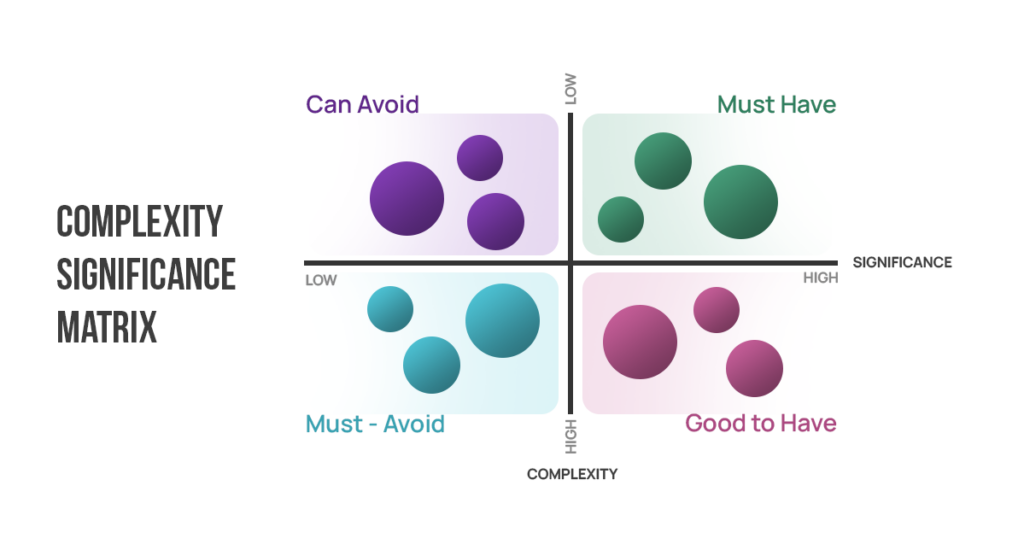 The eponymous tool, Complexity Significance Matrix, helps the team decide on customizations based on the complexity of implementation and the significance of the customized element. They’re grouped into four sections, and the decision to implement the customization will be the decision of the S2V committee.
The eponymous tool, Complexity Significance Matrix, helps the team decide on customizations based on the complexity of implementation and the significance of the customized element. They’re grouped into four sections, and the decision to implement the customization will be the decision of the S2V committee.
- Must-Have: Customizations that are low in complexity and high in significance get the highest priority. They will be immediately qualified for implementation as part of the second phase.
- Can-Avoid: Customizations that are low in complexity and low in significance are grouped as Can-Avoid. They are not on the priority list, and it’s the discretion of the committee to implement these or not.
- Must-Avoid: Customizations high in complexity and low in significance are classified as Must-Avoid. These customizations won’t add value in the long run and hence can be removed from the second phase of the implementation.
- Good to Have: Customizations that are high in complexity and high in significance take second precedence in the order of implementation. These customizations can also go live after implementing the customizations under the Must-Have section.
Finalizing the Right Partner
No one questions the role of an ally during a war. An ally is equally critical as the general, and the right partner for your digital transformation project can make or break the system. That’s why it’s essential to finalize a partner and not a vendor.
Perform due diligence including in-depth assessments to understand the capabilities of the digital transformation services partner. Analyze their technical capabilities, their understanding of technical requirements, and previous success in executing digital transformation projects.
A simple three-step value definition process can be a starting point in finalizing the partner.
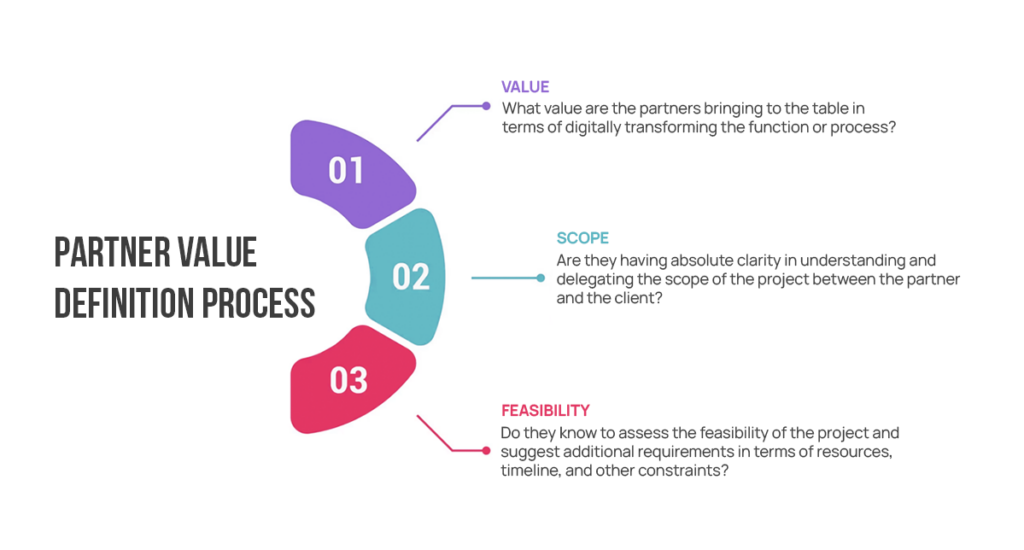
Additionally, the following questions can help figure out the partner’s capabilities.
- What are their suggestions for digitally transforming the function or process?
- How flexible is their pricing model and plan?
- What additional support and services can one expect from them?
- Is the new solution data source agnostic and scalable?
Epilogue – Embracing Speed to Value for a Digital Future
Speed to value as a methodology for digital transformation is one of the least discussed topics in many forums. There will be the usual articles about other aspects of digital transformation such as setting the objective, getting leadership buy-in, change management, etc. Not that they’re not important, but the key aspect of any digital transformation project sits on recognizing value at the earliest.
The core requirement is lost amidst the noise of setting expectations and other tasks. Speed to value breaks this usual clutter and focuses rigorously on ensuring the user gets value right from day-1 of the project where speed is of the ultimate essence.


